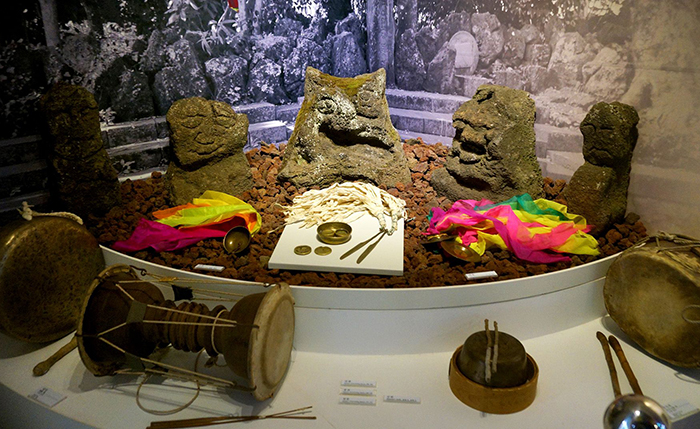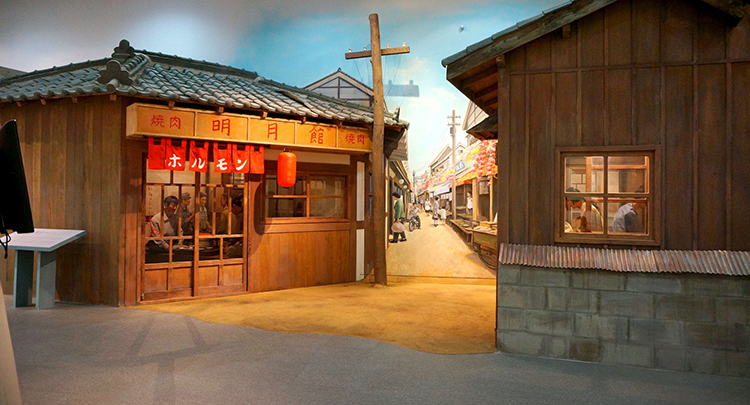
Islands are places in which unique cultures are fostered. While the main reason could be seen in their geographic isolation and exceptional natural environment, the true reason is due to their own people. After all, they are the ones that experienced these elements, manifesting their responses through forming communities, religions, and different identities as time has gone by.
Jeju Island found its first manifestation of culture through the formation of Tamna Kingdom. Yet, for several centuries, inhabitants of the Jeju Island were subdued under the rule of the Mongolian, Joseon, and Japanese governments. Once they were finally able to experience freedom, the American military and different hostile groups continued to oppress people mercilessly. Thus, as a result of this tragic history, a great part of the folk culture of the island was in danger of getting lost.
When the Cheju Elementary University was established in 1952, one of its main purposes was to find the roots of this culture in hopes of rethreading what made it so unique; then, it would depend on future generations to make it transcend time. In this fashion, the ‘Cheju Elementary University Folk Museum’ opened in March of 1967 in the Yongdam Campus: it became the first museum to ever open in Jeju Island. Evidently, as the Island has reached modern development, more museums have appeared – yet this one has evolved with times too.
With the promotion of the Cheju Elementary University to Jeju National University in 1980, the museum was moved to its current location in the Ara Campus.
It received its current name in 1985. Around 2001, the museum exhibited 5,334 relics and about 10,000 buried cultural properties. However, the buried cultural properties were transferred to the National Museum of Korea, reducing it to its current size.
The museum consists of a three-story structure, as well as an outdoor exhibition hall in front of the building displaying various stone artifacts. The Jeju National University History Room is located on the first floor. It presents a chronology of the formation of our university through exhibitions of materials about the school at that time. Additionally, the first floor also has the ‘ZAINICHI’ (Jejuans in Japan) Hall, which present the sorrows of the Jeju citizens that moved to Japan during difficult times.
The second floor has a permanent exhibition room about the Sea, the People, and the Land of Jeju. the Jeju Sea Exhibition Hall is filled with relics that show the prowess of the Jeju people, who have wisely used the rough sea as a venue for cultural exchange with other regions and as a place of life.
Highlights of this collection are the prehistoric fishing and Haenyeo artifacts exhibition.
Moving along, the Jeju People's Exhibition Hall displays relics that show the mythologic and literary activities of the islanders.
These are living proof of the people’s adaptability to the rough environment and living conditions. Memorable parts of the collection include various weapons, folk paintings, and poems of scholars who glorified Jeju.
Finally, the Jeju Land Exhibition Hall, presents relics that can give us an insight of the way of living of the islanders through agriculture, farming, hunting, and medical practices. The main exhibitions consist of relics used as home appliances in the kitchen, traditional clothes, agricultural tools, livestock and horse-related relics.
Finally, the third floor consist of the Hanjip Folk Museum, a permanent exhibition room ran by the folklorist Jin Sung Gi. It has donations given to JNU, along with the original material of the Cheju Elementary University Folk Museum. Furthermore, the outdoor terrace on this floor offers an unforgettable view of the beautiful scenery of JNU. Combining the most interesting historical, sociological, and geographical facts about Jeju Island, the JNU museum is without a doubt one of the hidden gems within the island. The Islander staff hopes that you could visit its various exhibitions that contributing to academic research. After all, collecting, exhibiting, and preserving materials in the fields of art, history, folklore, and anthropology of Jeju Island makes its culture shine through time.
Just a heads- up. materials of the museum are only in Korean, so prepare a translator if you want to get the full experience!



